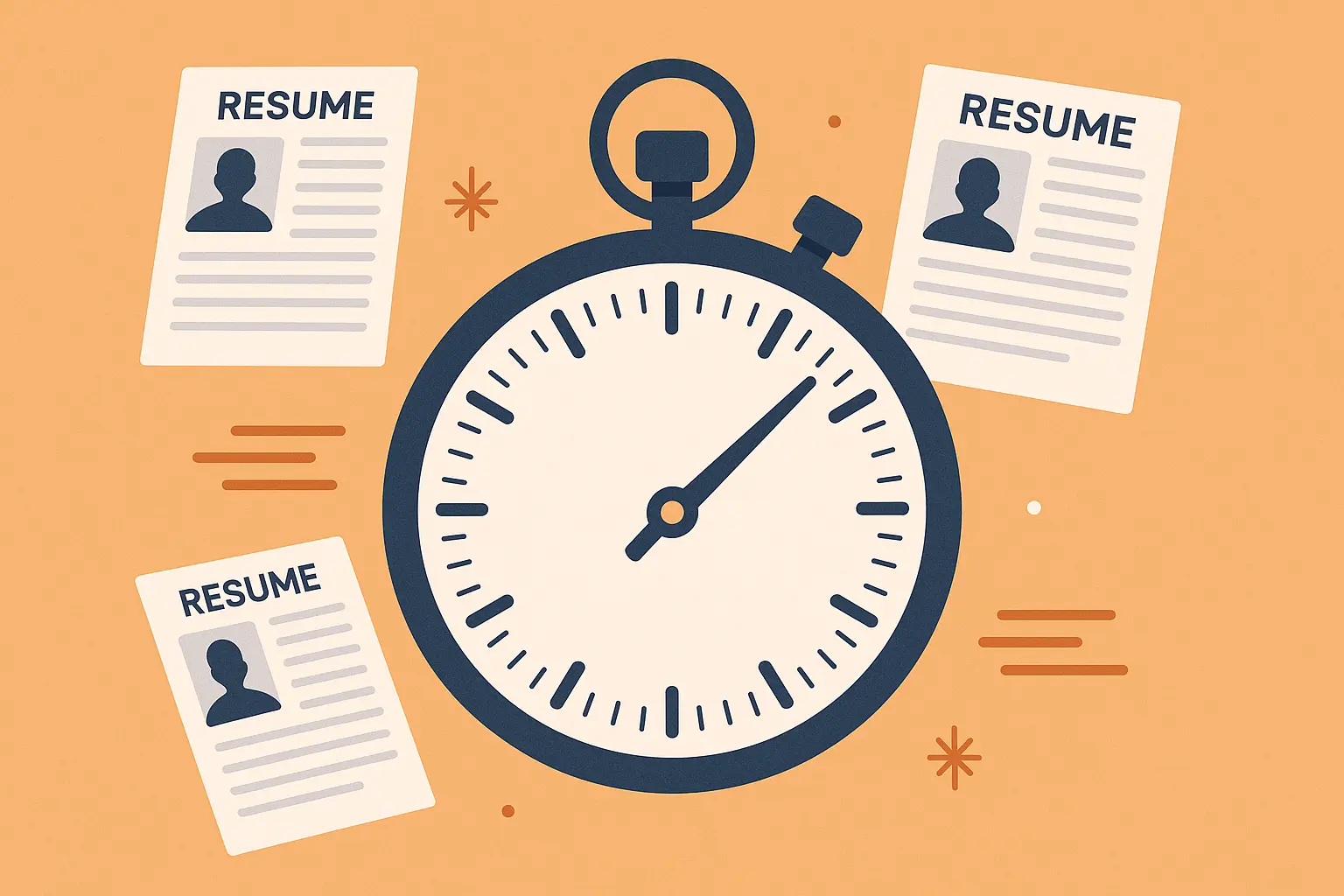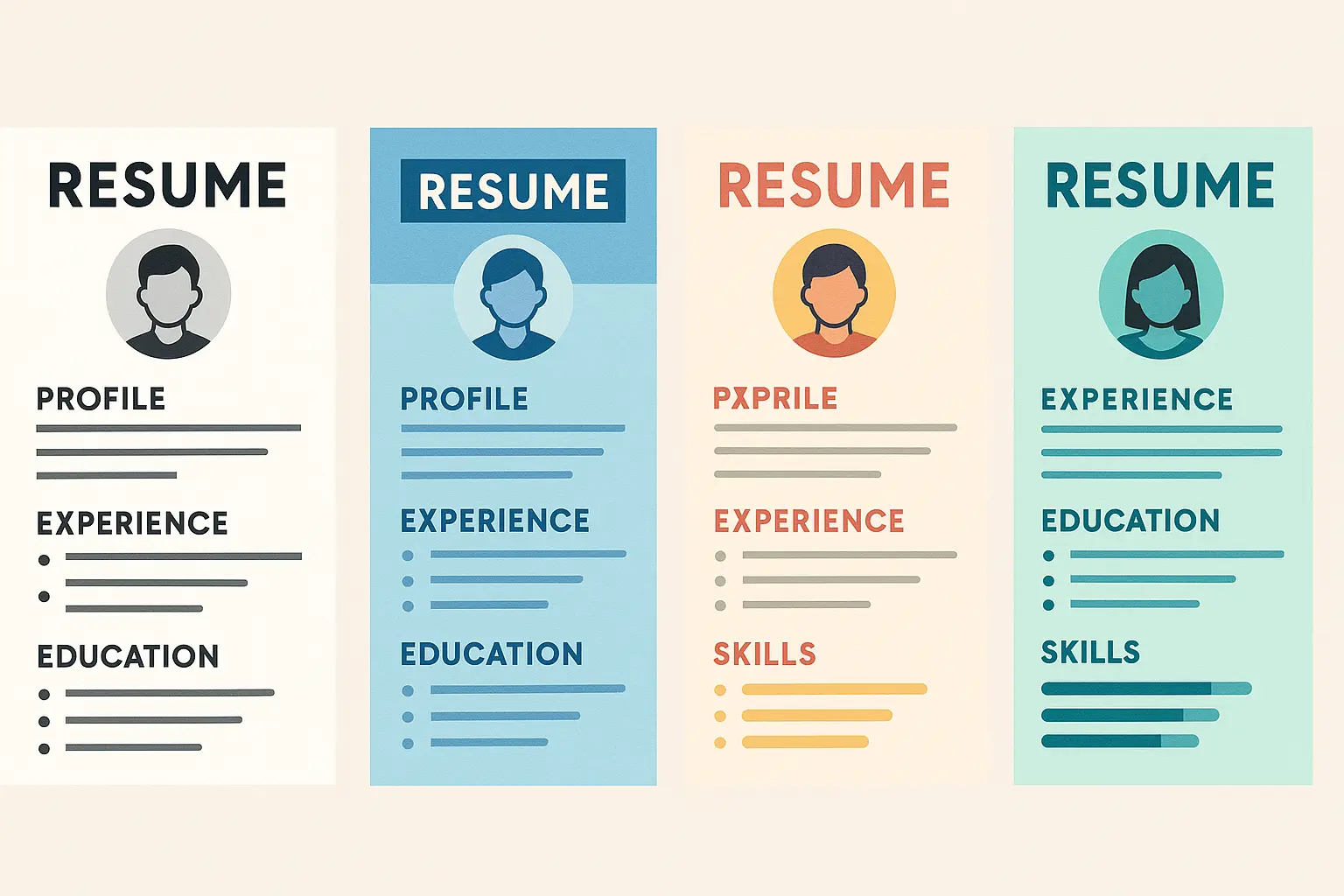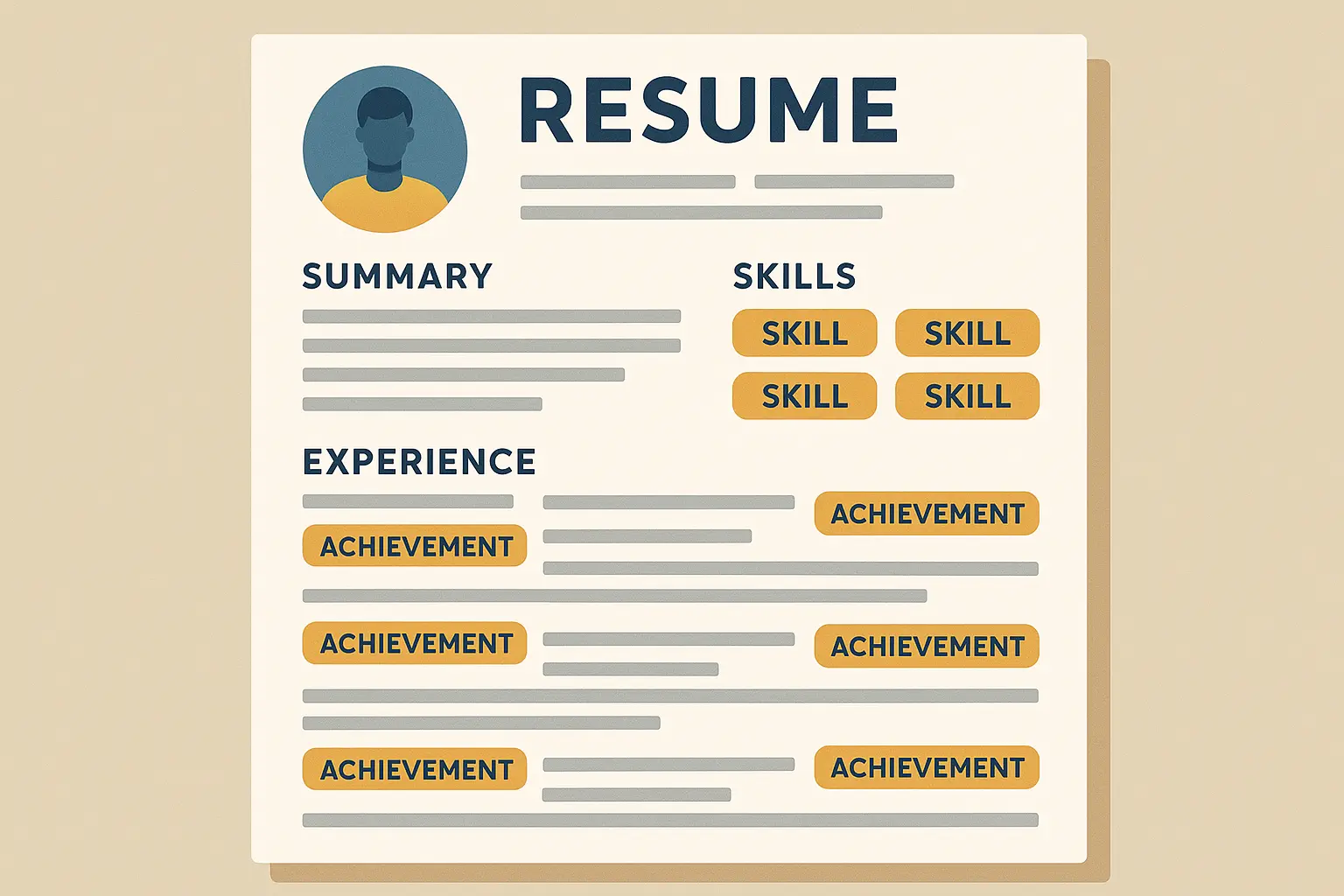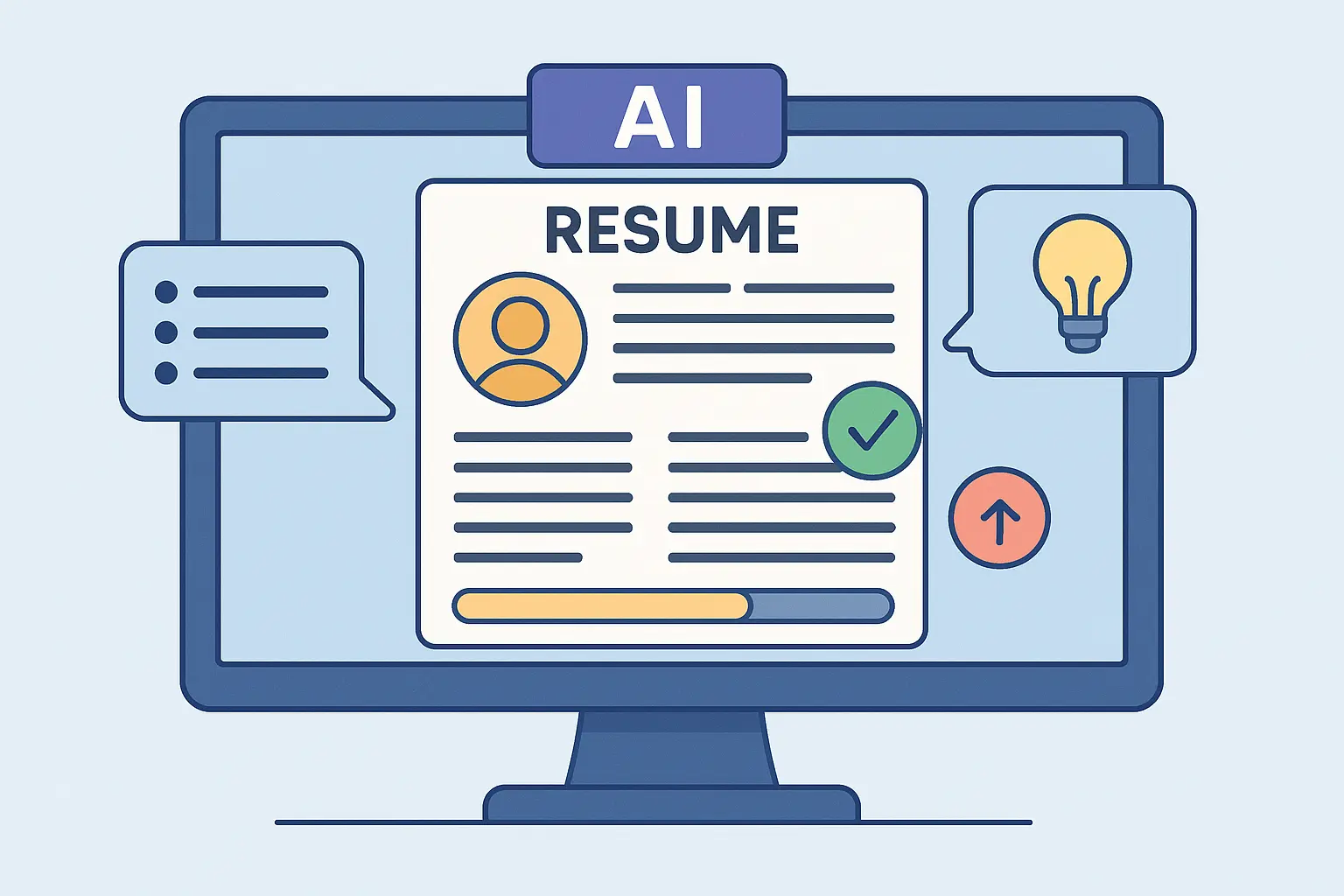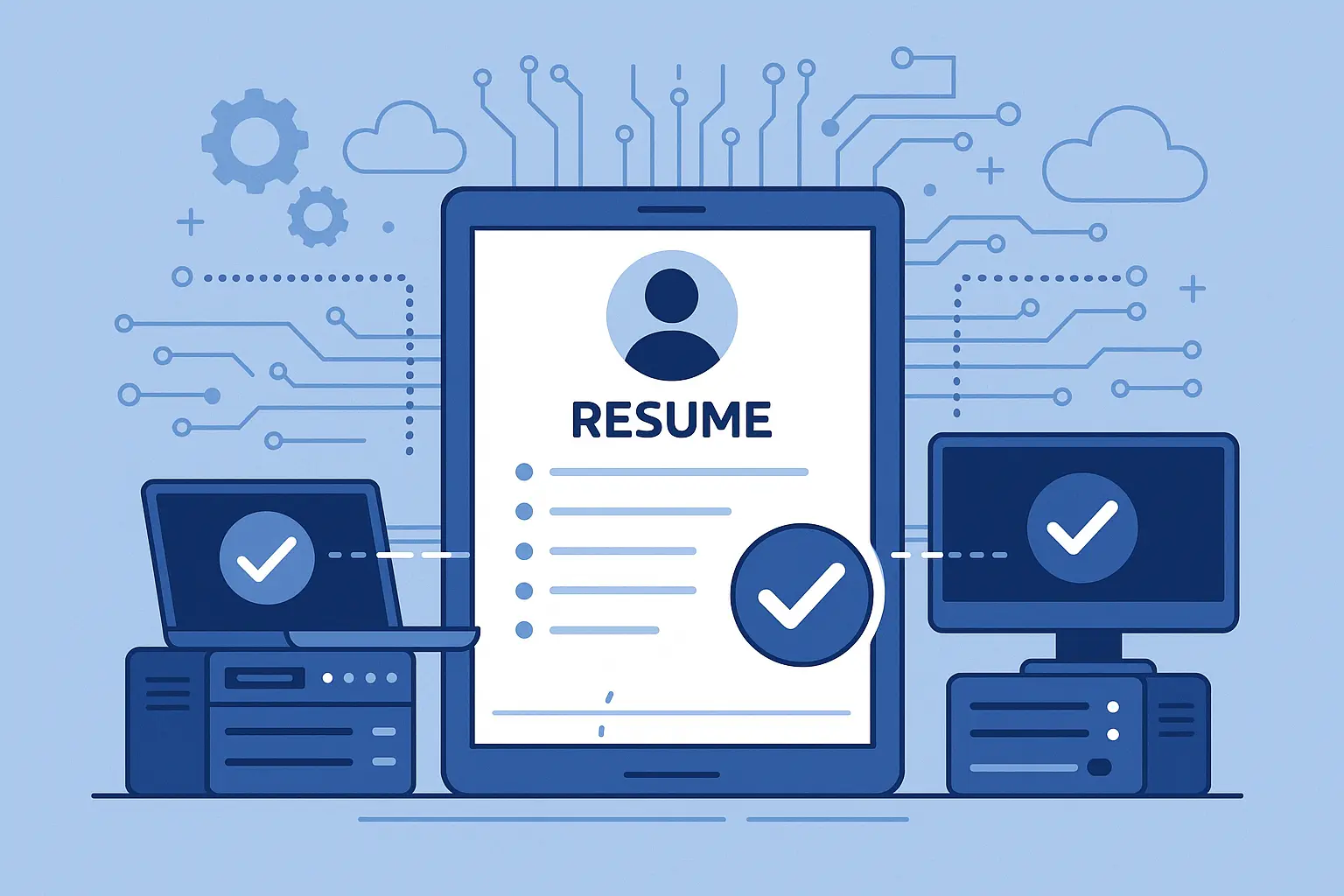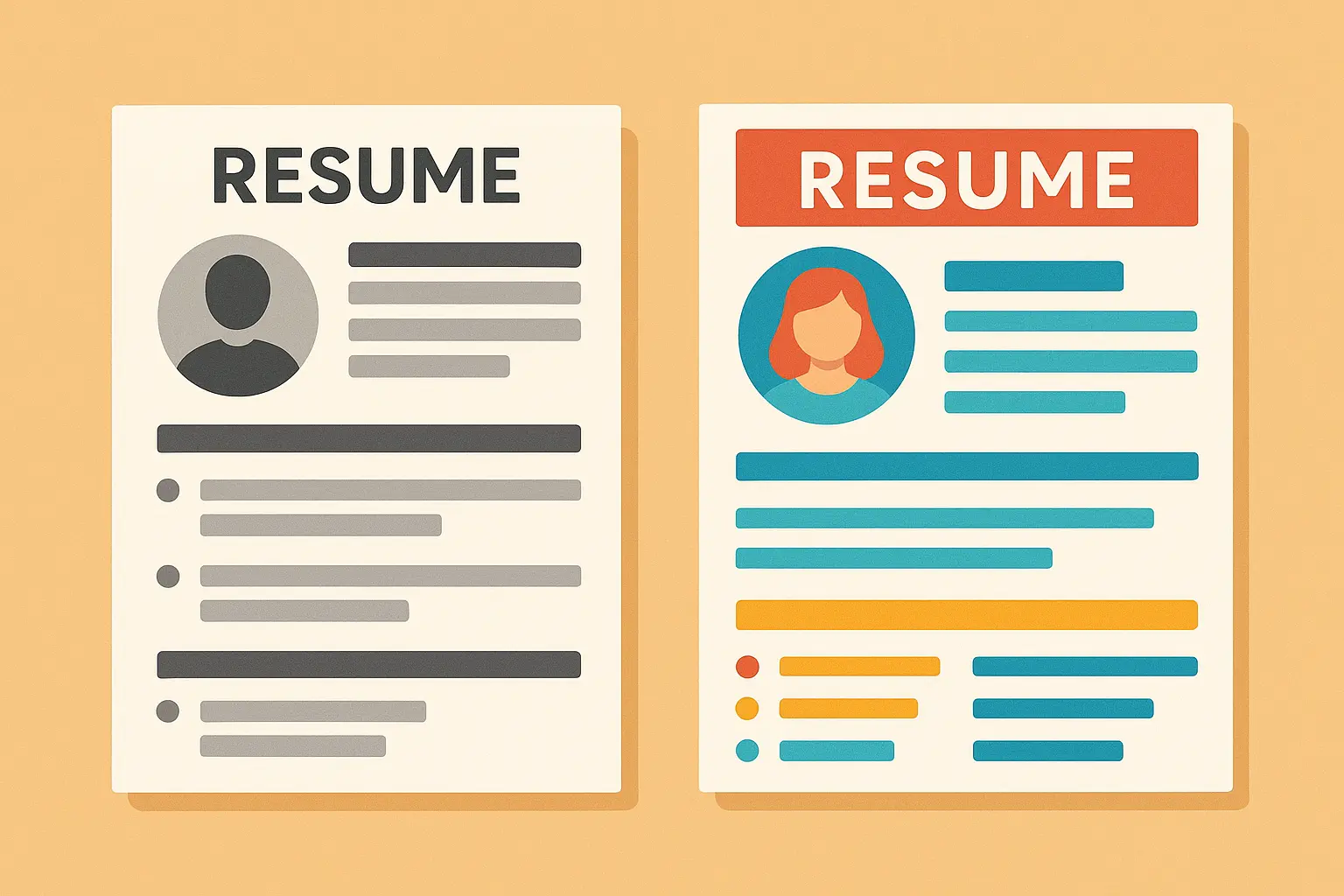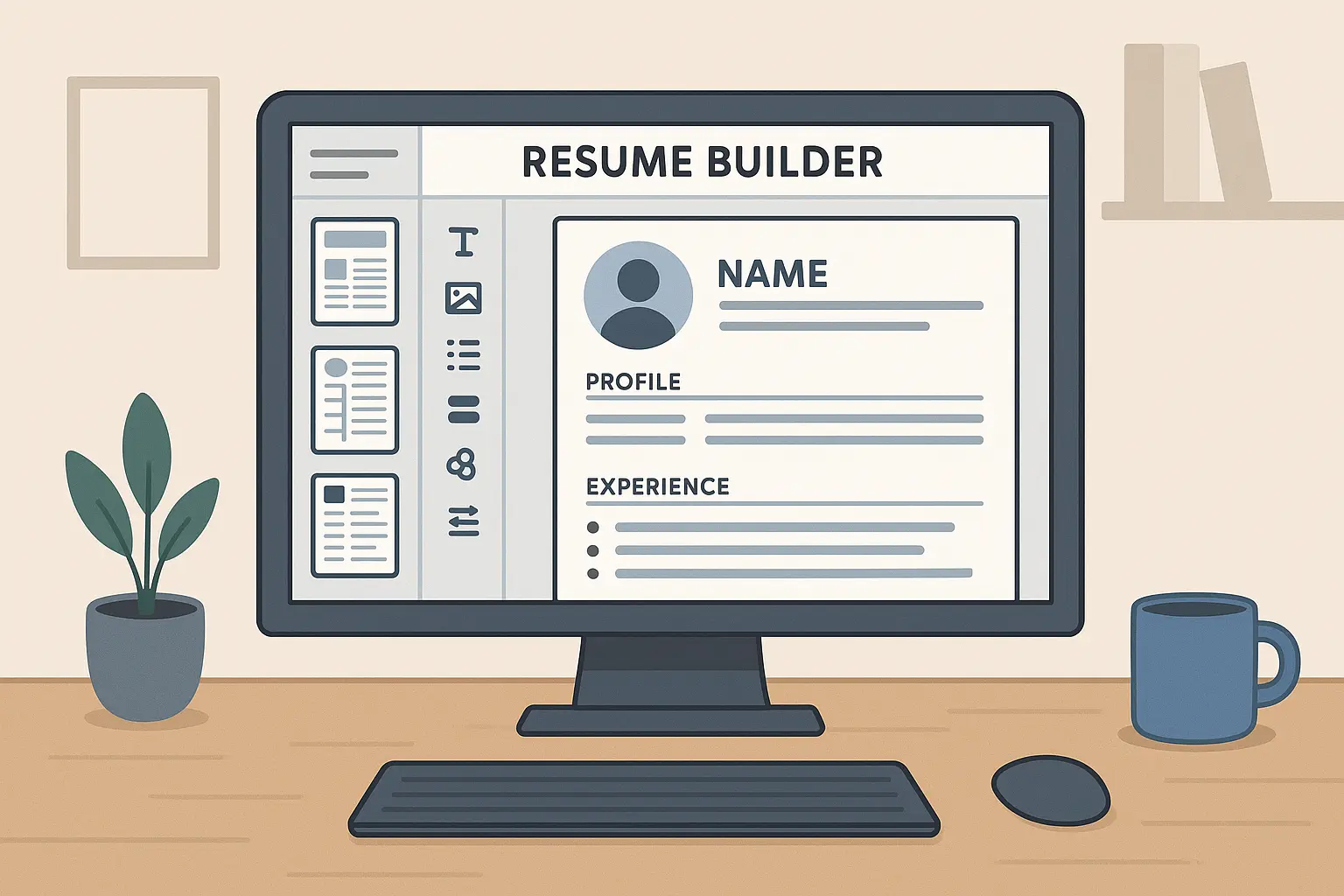What Does a Good Resume Look Like: The Real-World Guide to Creating One That Actually Gets You Hired

You have about 7 seconds. That’s how long most hiring managers spend scanning your resume before deciding if you’re worth their time. Brutal? Maybe. But once you understand this reality, you can work with it instead of against it.
The average resume is just 489 words long, with single-page resumes typically containing around 380 words according to Finances Online. Yet within this limited space, you need to capture attention, showcase your value, and navigate automated screening systems. Creating an effective resume isn’t about following outdated rules or cramming every detail onto paper – it’s about strategic communication that gets results.
Table of Contents
-
Why Those First 7 Seconds Make or Break Everything
-
Making Your Resume Look Professional Without Being Boring
-
Smart Template Choices That Actually Work
-
Content That Shows Impact, Not Just Duties
-
Getting Past Robot Screeners (It’s Easier Than You Think)
-
Tailoring Without Starting from Scratch Every Time
-
The Step-by-Step Process That Actually Makes Sense
-
Industry-Specific Strategies That Matter
-
Tools That Make This Whole Thing Easier
TL;DR
Your resume needs to work in seconds, not minutes. Clean design beats flashy every time. Show results with numbers, not just job duties. Keywords matter, but don’t be weird about them. Customize smart, not hard. Test everything before you send it.
Why Those First 7 Seconds Make or Break Everything
Think of your resume like a storefront window. People decide whether to walk in before they even read the sign. The average time a recruiter spends looking at a resume is between 5 and 7 seconds according to Maria Bocancea, LinkedIn. This extremely brief window means your resume’s visual hierarchy and immediate readability determine whether you make it past the initial screening.
I’ve seen brilliant candidates get overlooked because their resumes looked cluttered at first glance. The content matters most, but presentation gets you in the door.
During that lightning-fast scan, hiring managers aren’t reading word by word. They’re hunting for specific information in predictable places – your name, contact info, current role, and key qualifications. Make these easy to find, or they’ll move on to the next candidate.
Making Your Resume Look Professional Without Being Boring
Professional doesn’t mean sterile. A good resume balances visual appeal with readability, using clean layouts, appropriate fonts, and strategic white space to guide the reader’s eye naturally through your qualifications.
Understanding professional formatting starts with mastering the professional resume format that hiring managers expect to see. After reviewing thousands of resumes, the ones that stand out have clear visual hierarchy that makes important information pop off the page.
White space is your friend here. Don’t cram everything onto one page if it makes your resume look like a phone book. A well-organized two-page resume often performs better than a cramped single page that gives people headaches.
Smart Template Choices That Actually Work
Template selection goes beyond picking something pretty. You need formats that work across different industries, application systems, and review processes. Modern templates should be ATS-compatible while still having enough visual interest to stand out.
When building your resume, choosing the right format is crucial, which is why many professionals turn to best resume builders that offer industry-specific templates. I’ve watched too many people choose flashy templates that look great but completely fail when processed by applicant tracking systems.
Consider your industry’s expectations. Creative fields allow more design flexibility, while corporate environments typically prefer cleaner, more traditional layouts. Amazon’s hiring experts recommend keeping resumes “text-forward, black and white, and simple” because they’re most interested in accomplishments rather than decorative elements.
Making Your Resume Scannable in Seconds
Hiring managers don’t read resumes linearly – they scan for key information in predictable patterns. Strategic use of white space, clear section headers, and bullet points helps them quickly locate your most relevant qualifications.
Instead of writing “Responsible for managing social media accounts,” use scannable formatting with strong action verbs: “• Managed 5 social media accounts • Increased engagement by 40% in 6 months • Generated 200+ qualified leads monthly.” This format allows recruiters to quickly identify your role, impact, and results.
Getting the Visual Elements Right
The visual aspects of your resume work together to create an impression of professionalism and attention to detail. These elements should enhance your content rather than distract from it.
Font Choices That Actually Matter
Fonts aren’t exciting, but they matter. Stick with Arial, Calibri, or Times New Roman. Yes, they’re boring. They’re also readable on every device and won’t make you look like you’re designing a birthday party invitation.
Choosing the right typography is essential when creating your resume, and our comprehensive guide to best resume fonts can help you make the perfect selection for your industry. Font size should be 10-12 points for body text, with slightly larger sizes for headers. Don’t go smaller than 10 points even if you’re trying to fit more content – if hiring managers need to squint, they won’t bother.
When and How to Use Color Strategically
Color can enhance your resume’s visual appeal, but it needs to be used thoughtfully. Banking and law firms want boring resumes. Seriously. Black text, white background, zero creativity. Marketing and design companies expect the opposite – show some personality, but don’t go crazy.
When using color, stick to professional tones and ensure your resume remains readable when printed in black and white. I recommend using color sparingly – perhaps for section headers or your name – rather than throughout the entire document.
Content That Shows Impact, Not Just Duties
Stop writing your resume like a job description. Instead of “Responsible for managing social media accounts,” try “Boosted Instagram engagement 40% in six months.” See the difference? One tells me what you were supposed to do. The other tells me what you actually accomplished.
Your resume content should tell a compelling story of professional growth and achievement rather than just listing job duties. This means focusing on what you accomplished in each role, the impact you made, and the value you brought to your employers.
Writing a Professional Summary That Hooks Them
Your professional summary serves as your elevator pitch – those crucial 2-3 sentences at the top of your resume that immediately communicate who you are professionally and what value you bring.
Don’t start with “Results-driven professional with…” – everyone uses that phrase. Instead, be specific about your role and expertise: “Digital Marketing Manager with 7 years of experience driving customer acquisition for SaaS companies.”
Showing Your Impact With Real Numbers
Quantifying your achievements transforms vague accomplishments into concrete evidence of your professional value. Instead of saying you “increased sales,” specify that you “increased sales by 25% over six months.” Numbers provide context and scale that help employers understand the magnitude of your contributions.
Amazon’s hiring experts recommend transforming generic statements into quantified achievements. Instead of “Responsible for introducing new tech stack,” write “Successfully led the acquisition and integration of innovative efficiency software that reduced errors by 25%, resulting in a reduction of customer complaints by 37% YoY.”
Turning Job Duties Into Achievement Stories
The difference between a mediocre resume and a great one often comes down to how you present your work experience. Rather than listing what you were supposed to do, focus on what you actually accomplished, the challenges you solved, and the positive outcomes you delivered.
Every bullet point should answer the question: “So what?” If you managed a team of five people, what did that team accomplish under your leadership?
Using Action Words That Pack a Punch
Lead with action words that show you made things happen. “Spearheaded” beats “was responsible for” every time. And please, stop saying you “helped with” things – you either did it or you didn’t.
Strong action verbs at the beginning of each bullet point create immediate impact:
-
Weak: Responsible for, Helped with, Was involved in
-
Strong: Spearheaded, Developed, Executed, Delivered
Weaving Skills Throughout Your Experience
Rather than relegating skills to a separate section, integrate them naturally throughout your experience descriptions. This approach shows how you’ve actually applied your skills in real work situations while helping with keyword optimization.
Instead of having a separate “Skills” section that lists “Project Management,” show how you used project management skills: “Managed cross-functional project teams of 8-12 members, delivering software releases 15% ahead of schedule.”
Getting Past Robot Screeners (It’s Easier Than You Think)
Here’s the thing about those robot screeners everyone complains about: they’re actually pretty simple to please. Use standard fonts, clear headings, and skip the fancy graphics. If you copy your resume into a plain text document and it looks like a mess, the ATS probably can’t read it either.
When building your resume for today’s job market, understanding ATS resume format requirements is essential for getting past automated screening systems. ATS systems quickly eliminate up to 75% of the resumes submitted for a specific role according to Maria Bocancea, LinkedIn.
I used to think ATS optimization was just about keyword stuffing, but it’s actually much more nuanced. These systems are looking for specific formatting, relevant keywords used in context, and clear section organization.
Making Friends With the Robots
ATS compatibility comes down to using clean, simple formatting that these systems can easily parse and understand. This means avoiding complex layouts, graphics, tables, and unusual fonts that might confuse the software.
I’ve tested dozens of resume formats through various ATS systems, and the ones that work best are surprisingly simple. The goal is creating a resume that performs well in automated screening while still looking professional to human reviewers.
Keywords That Actually Work
Keywords matter, but don’t be weird about it. Read a few job posts in your field and notice which terms pop up repeatedly. Work those naturally into your descriptions. If you’re jamming “synergy” and “thought leadership” into every sentence, you’ve gone too far.
Effective keyword strategy involves identifying the specific terms, skills, and qualifications that appear frequently in job postings for your target role. Read through 5-10 job postings for your target role and note which terms appear repeatedly – those are your priority keywords.
File Formats That Don’t Mess Things Up
Different application systems handle file formats differently. Generally, PDF preserves formatting better, while Word documents are more easily parsed by older ATS systems. When in doubt, follow the application instructions or keep both a PDF and Word version ready.
Using AI Tools Without Losing Your Voice
AI-powered resume tools can help improve your content quality and optimize keyword usage, but they should enhance rather than replace your authentic professional voice. According to “Cybernews’ comprehensive review” of AI resume builders, these tools are “transforming how we craft resumes by making the process more personalized and efficient,” but they emphasize that “AI does not have the same nuance or creative approaches to writing a resume as a human.”
Use AI tools to brainstorm different ways to phrase your accomplishments, but always make sure the final version sounds authentically you. Don’t let AI tools convince you to exaggerate or misrepresent your background.
Tailoring Without Starting from Scratch Every Time
You don’t need to rewrite your entire resume for every job. Create a master version with all your best stuff, then rearrange and emphasize different pieces based on what each employer wants. It’s like having a closet full of clothes – you’re not buying new outfits every day, just mixing and matching what works.
Smart tailoring involves having a master resume with all your experiences and achievements, then strategically emphasizing different elements based on specific job requirements. This approach allows you to create targeted versions efficiently while maintaining consistency.
Analyzing Job Posts Like a Detective
Effective resume tailoring starts with thoroughly analyzing job postings to identify key requirements, preferred qualifications, and company priorities. I spend at least 10-15 minutes really dissecting each job posting before I start customizing my resume. This upfront investment pays off because I can speak directly to what they’re looking for.
Look beyond the obvious requirements to understand the underlying challenges the role needs to solve. If a job posting mentions “fast-paced environment” three times, they’re probably dealing with tight deadlines and need someone who thrives under pressure.
Matching Your Experience to Their Needs
Once you understand what an employer is looking for, you can strategically emphasize the experiences and achievements that most directly address their needs. This might mean reordering your bullet points, adjusting your professional summary, or highlighting different aspects of the same accomplishment.
Quick tailoring checklist:
-
Match job title keywords in your summary
-
Reorder bullet points by relevance to this specific role
-
Adjust skills section emphasis
-
Use company/industry terminology
-
Quantify achievements with metrics that matter to this role
The Step-by-Step Process That Actually Makes Sense
Here’s the order that actually works: First, dump everything you’ve ever done into a document. Every project, every win, every “oh yeah, I did that too” moment. Then pick the best stuff
Here’s the order that actually works: First, dump everything you’ve ever done into a document. Every project, every win, every “oh yeah, I did that too” moment. Then pick the best stuff for each application. It’s easier to cut than to remember what you forgot.
Creating an effective resume is much easier when you follow a systematic process rather than trying to write everything at once. Nobody taught me this methodical approach when I started my career, and I wasted countless hours staring at blank documents wondering where to begin.
Before You Start Writing Anything
Start by creating a comprehensive inventory of your work experiences, achievements, skills, and qualifications. Document specific accomplishments with quantifiable results, gather performance reviews and commendations, and note all relevant professional development.
I keep a running document with every project I’ve worked on, every metric I’ve improved, and every piece of positive feedback I’ve received. When it’s time to update my resume, I have everything at my fingertips.
Spend time on company websites, read their blog posts, and check out their LinkedIn pages. The language they use in their content should influence how you describe your own experience.
Actually Writing the Thing
The writing process becomes much smoother when you have a clear structure and approach. Use the STAR method (Situation, Task, Action, Result) to transform job responsibilities into achievement-focused statements.
Using the STAR method: “Situation: Company struggled with 40% customer churn. Task: Reduce churn and improve retention. Action: Developed and implemented customer success program with proactive outreach and feedback loops. Result: Reduced churn to 15% within 8 months, saving $2.3M in annual revenue.”
Writing an effective professional summary requires understanding how to craft compelling resume summary examples that immediately grab attention and showcase your value. I rewrite my professional summary for almost every application because it’s the first thing hiring managers read.
Making Sure Everything’s Perfect
Before you hit send: Read it out loud (seriously), spell-check everything twice, and make sure your email address actually works. I once knew someone who had a typo in their contact info for three months. Don’t be that person.
Test your resume’s ATS compatibility by saving it in multiple formats and copying the content into a plain text document to verify that all information transfers correctly. 59% of U.S. employers use artificial intelligence-based ATS in their hiring process according to SHRM.
Industry-Specific Strategies That Actually Matter
Different industries have vastly different expectations for resume design and presentation. What works in tech might look completely inappropriate for finance, and creative fields often welcome design elements that would be rejected in conservative corporate environments.
Corporate vs. Creative: Reading the Room
When in doubt, look at the company’s website. Buttoned-up site = buttoned-up resume. Financial services, law, healthcare, and government positions usually require more conservative resume designs. These industries value tradition, stability, and attention to detail, which should be reflected in your resume’s clean, professional appearance.
I learned this the hard way when I submitted a colorful, creative resume to a law firm and never heard back. Marketing, advertising, graphic design, and media companies often expect resumes that showcase creativity and design sensibility. However, even in creative fields, readability and professionalism remain paramount.
Going Global: International Resume Differences
If you’re applying for positions internationally, understanding regional resume conventions becomes crucial. European CVs often include personal information that would be inappropriate on US resumes, while some Asian markets prefer different formatting and content organization.
US resumes typically focus on achievements and are usually 1-2 pages long, while European CVs can be longer and more detailed. Some countries expect photos, personal information, or different section organization. Understanding these differences prevents cultural missteps that could eliminate you from consideration.
Connecting Your Digital Presence
Modern resumes often need to integrate with your online professional presence, including LinkedIn profiles, personal websites, and digital portfolios. If your work involves tangible outputs – design, writing, projects, or presentations – your resume should strategically reference your portfolio without overwhelming the document.
Your portfolio should complement your resume, not repeat it. Use your resume to highlight your best work and direct readers to your portfolio for detailed examples.
Tools That Make This Whole Thing Easier
While creating a great resume is definitely doable on your own, Resume Builder IQ streamlines the entire process by providing guided templates, AI-powered content suggestions, and built-in ATS optimization. The platform eliminates much of the guesswork involved in resume creation while ensuring you end up with a professional document that performs well in today’s job market.
Resume Builder IQ addresses the most common pain points in resume creation – from choosing the right template to optimizing for ATS systems to writing compelling content that showcases your achievements. Whether you’re starting from scratch or updating an existing resume, the platform provides tools and expertise to create a resume that stands out.
Ready to create a resume that actually gets you interviews? Try Resume Builder IQ today and see how much easier the process can be.
Final Thoughts
Look, creating a great resume isn’t rocket science, but it does take some thought and effort. Focus on showing your impact, make it easy to read, and remember that every word should earn its place on the page. Your resume isn’t your life story – it’s your greatest hits album.
The perfect resume doesn’t exist, but a good one absolutely does. Focus on results over responsibilities, make it scannable, and remember – your goal isn’t to tell your whole story. It’s to get a phone call.
I’ve seen brilliant engineers get passed over because their resumes looked like grocery lists. I’ve also seen average performers land great jobs because they knew how to tell their story. Guess which group you want to be in?
Most importantly, don’t let perfectionism paralyze you. A good resume that you actually submit is infinitely better than a perfect resume that never leaves your computer. Start with the basics, get feedback, and continuously improve as you learn what works in your industry and target market.


